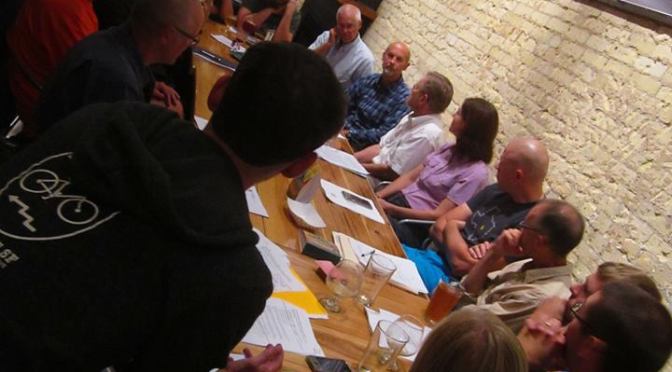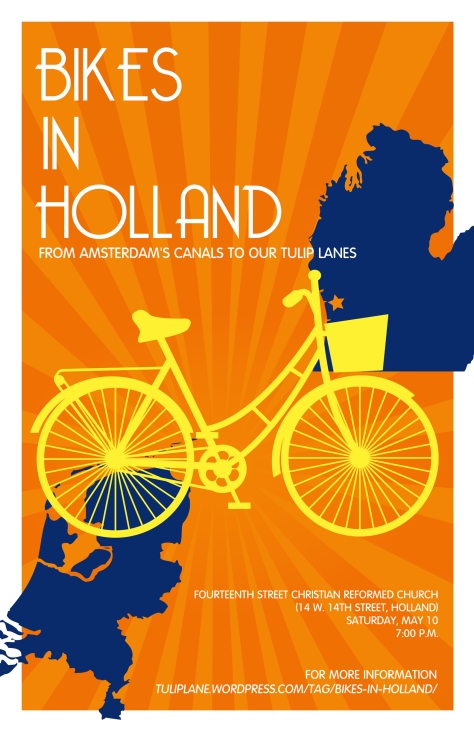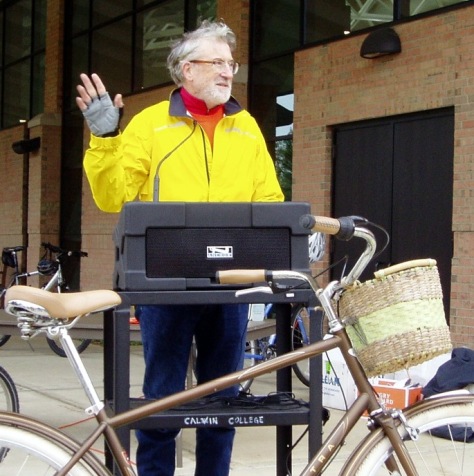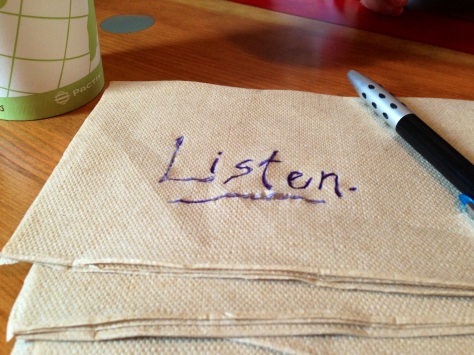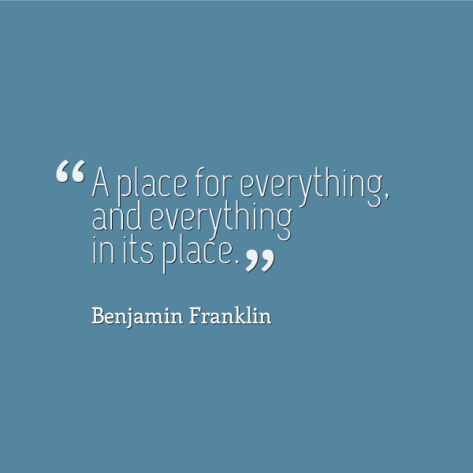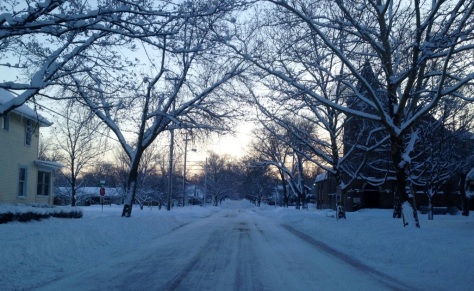
The day was long enough to warrant a walk that was even longer. After a day or three alone in a house with sweetly intense small people, my home had indeed begun to feel like a “vortex of isolation.”* You’ve had those too, I know.
Fourteen blocks along shifty, snowy sidewalks, my feet are skittish at their inability to find a firm spot to land. I grump over hip-high snowbanks, then feel simultaneously guilty and grateful – guilty for my gripey discontent, grateful that our town’s sidewalk plow has allowed me any path at all through this deep midwinter night.
Although the shop windows are dark, the sidewalks downtown are busy: a neon rainbow of runners, dogs bouncing and whining their wish to make friends, other women who have fled their homes to walk away the day.
Is there something inherently welcoming in a coffee shop, or is it just that this place has become my sanctuary of evening escape? It’s a relief to take in the range of people at the tables around me. Some stare seriously at the white pages in front of them. There is a woman who leans in to a quiet conversation, tilts her head and laughs in an easy, familiar way. A brown-haired girl moves her hand uncertainly along her necklace and purses her lips as her companion explains something to her. These nameless people aren’t my tribe, but their presence is comforting.
I stand at the counter, decided in my choice of jasmine tea and pretending that a whole milk mocha piled high with whipped cream isn’t even an option. As the barista walks up, I sigh. And what I mean is that I SIGH, an another-polar-vortex-is-moving-in sigh, a watch-out-we’re-deflating-a-hot-air-balloon sigh. “Oops. That wasn’t supposed to come out!” I said. She laughs. “Oh, I know that sigh! My seven-year-old stayed home sick from school and fought with his brother the whole day. I was so glad to get to come to work tonight!” We make small talk about the fine art of surviving one’s blessings as she rings up my order.
This lighthearted conversation was exactly what I needed. It’s something we all need, as it turns out. Although we desperately need deep and dependable friendships, we also need these passing connections to help us feel like we’re part of something bigger than our own skin. If you’ve ever said, “ugh, I just need to get out!” (and you have said that, right?) you already know this somewhere in your bones.
Urban sociologist Ray Oldenberg argues that a “third place – a place that’s not home, and not work, but a neutral place where all are welcome – is more than just a place to relax: It’s a cornerstone of thriving democracy.
Again and again we hear about how polarized our political climate has become and how we’re migrating further to the ends of the ideological spectrum by the stand-alone opinions of talking heads. Interacting with real people – our neighbors, especially – has a moderating effect on us. We enjoy going out because we’re human, but in the process we reinforce the foundation of civil society.
I’m not thinking about protecting democracy on this night, though. I lean back in my chair allow myself the space to feel grateful for, well, for this SPACE and for the people who fill it. They’re not the ones I’ll call when my kids are sick or when the very thought of moderating one more sibling dispute is enough to send me off the rails, but they are my neighbors. And tonight, being surrounded by their anonymous selves is just what I need.
As you go out and about your week, will you consider meeting a friend in some third space? Of course you have cabin fever, and let’s face it, the way this winter has gone you have most certainly earned a break. But it’s bigger than that. It’s for democracy!
If you decide you’re willing to serve your country in this way, leave a comment or shoot me an email at tulip.lane@outlook.com. I’d love to hear about it.
*This phrase from Charles Montgomery’s Happy City: Transforming Our Lives through Urban Design , which I highly, highly recommend. (That’s an affiliate link, so I’ll get a small cut of your purchase if you click through that link. Thanks!)
, which I highly, highly recommend. (That’s an affiliate link, so I’ll get a small cut of your purchase if you click through that link. Thanks!)

